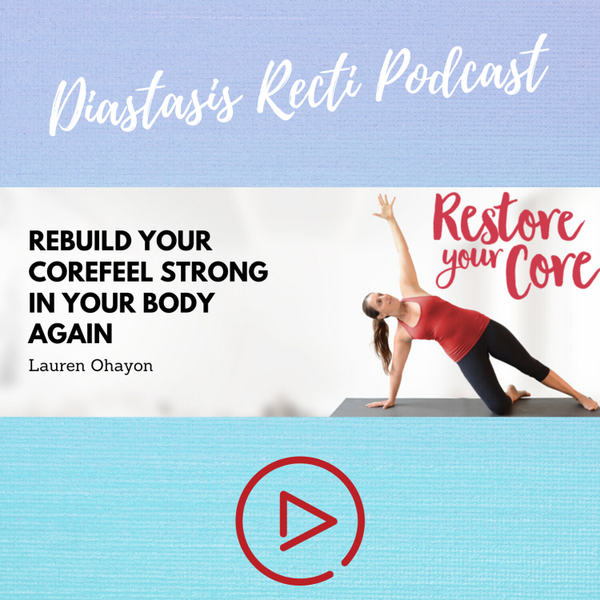
Diastasis Recti Hernia
- S1E35
- 02:45
- February 19th 2021
Diastasis recti is a common condition that is often mistaken or confused with a hernia. However, the two conditions are unique and require a variety of different treatments. Diastasis is latin for the separation of two parts. Recti is a latin plural meaning straight. In the medical field, diastasis recti is the separation of the linea alba (the straight line in between your six pack muscles) and the abdominal wall, commonly referred to as the six-pack muscles.
The confusion between diastasis recti and a hernia arises from the small to large bulge that may result in the midline due to diastasis recti and since a hernia is due to a “gap” – they are often confused. Please note that the two can often go hand in hand
What is Diastasis Recti?
A diastasis recti is a separation of the abdominal wall muscles (the rectus abdominis). Most of us know the famous 6-pack muscles by looking at fitness models or bodybuilders as they are the most superficial layer of muscle and easily spottable when body fat is low and muscle tone is high. With a diastasis recti, these muscles separate in the center of the abs, causing a gap between the left and right sides of the muscle. The left and right sides of the muscle attach into a connective tissue that runs from your ribs to your pubic bone and that tissue, the linea alba – stretches and thins and as a result – the 6-pack splits – left from right.
In both men and women, this gap can be created in the midline of your belly anywhere from the pubic bone to the base of your ribcage. One obvious way to feel for the gap is during a crunch or sit-up, where one would normally feel tension and closure at the center of the abs, there is a space and a gap and your fingers can sink into your belly easily.
What is a Hernia?
Your abdomen contains layers upon layers of muscles and strong tissues. These help you move while also supporting and protecting the internal organs. A hernia occurs when the muscular wall becomes compromised and allows the contents inside the abdomen to descend outward. There are many different types of hernias, but the most common two occur in the belly or groin area.
Diastasis Recti vs Hernia
As you may be aware, distinguishing between a hernia and diastasis recti may be challenging. However, there are distinct characteristics that help differentiate the two.
A diastasis recti occurs only at the midline of the abdominal wall. Although it can range in placement and severity from the rib cage down to the pubic bone, it does not vear from the midline of the abdomen.
A hernia can occur anywhere in the abdominal wall, groin, or even in the diaphragm. Hernias more often occur at the site of a prior surgery or due to a weakened abdominal wall due to the compromised muscle structures that typically occur after an invasive abdominal surgery.
A diastasis may enlarge over time, but not in the same way a hernia does. Diastasis recti may stretch or spread in span due to continued strain and excessive levels of pressure on the midline. However, a hernia may enlarge over time if left untreated which may lead to life-threatening complications – strangulation.
Hernias can incarcerate (also known as strangulate) which cuts off the blood supply to that particular section of the intestine. As stated before, this can be a life-threatening situation.
This is not a concern with diastasis recti.
Hernia vs Diastasis Recti Pregnancy
There are several common types of hernias that may be mistaken as diastasis recti. These include umbilical hernia and ventral hernia. In some cases, these types of hernias may be present alongside diastasis recti.
Restore Your Core: Diastasis Recti and Pelvic Floor Talks
The Restore Your Core podcast is all about health and fitness for those struggling with Diastasis Recti or Pelvic Floor issues.
Lauren Ohayon makes videos, runs a thriving facebook group, and creates blogs that help people to feel better and reclaim their healthy bodies.
https://restoreyourcore.com/learn/diastasis-recti/
If you're too busy to read the blog then feel free to listen to the podcast! We hope to be a part of your core restoration journey.